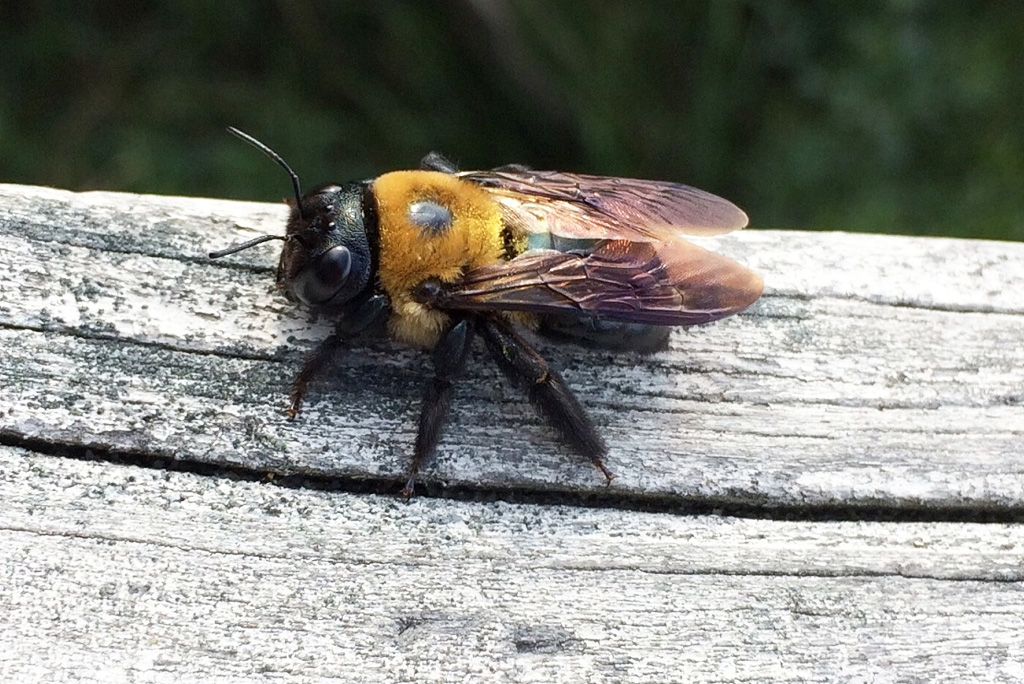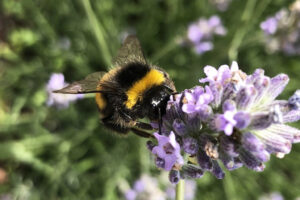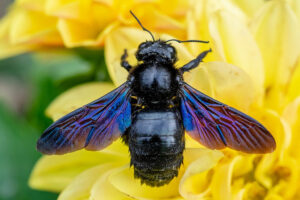If you frequently hear a lot of buzzing and see bees in your backyard, it’s important to know exactly what kind they are. Especially during spring, when all the insects come out in search of food, it can be quite challenging to determine if the bug is a carpenter bee or a bumblebee. Both bees play a very important role in the ecosystem by helping with the pollination of our food and flowers.
Bumblebees are harmless and look similar to carpenter bees that can cause major damage to your house. Knowing the difference between the two bee varieties will help you identify whether these bees are beneficial to your house, or are potentially destroying it.
So how do you tell if the bees flying near your home are carpenter bees or bumblebees? Keep reading to learn more as we’re discussing the differences between these two kinds of bees, including their appearance, nesting locations, and behavior.
Appearance – What Do Carpenter Bees And Bumblebees Look Like?
Bumblebees are similar in appearance to carpenter bees but you will see noticeable differences between these two types. The differences can easily be spotted from several feet away.
In general, carpenter bees tend to be larger than bumblebees. Carpenter bees can be between 3/4 and 1 inch in size, while bumblebees are typically around 0.6 to 1 inch long.
Look at their abdomens as this is one of the easiest ways to tell them apart.
Bumblebees have hairy bodies with a yellow stripe at the end. Their abdominal section has up to 4 yellow and black stripes. Females have a stinger at the end of their pointed abdomens, while male bumblebees have no stinger.
Carpenter bees have a smooth, shiny, and hairless body that is black, without any stripes. But they have a yellow midsection and a black dot in the center.
Lastly, if the bee’s head is entirely black, it’s a female carpenter bee. Male carpenter bees will also have white marks on their heads. But if the bee’s head is black and yellow, then it’s a bumble bee.
Nesting Locations – Where Do Carpenter Bees And Bumblebees Live?
Carpenter bees and bumblebees choose different nesting sites so you will not find their nests in the same places.
Bumblebees are social insects that live together in families of several hundred. They won’t bore holes in wood as they don’t have jaws strong enough to do so. Therefore, they often build their nests in or close to the ground, in dry and shaded places such as within trees and shrubs, under compost heaps and sheds, or even in thick grass. Bumblebees can also be found nesting in empty cavities such as abandoned rodent burrows, in birdhouses or empty nests.
Carpenter bee nests, on the other hand, are constructed by drilling holes in wood with their toothed mandibles. These are perfectly round holes, about 1 inch deep and about half an inch in diameter. Carpenter bees prefer to nest in old, untreated wood. They also leave their feces before entering their nests, so check for yellow streaks or stains just below the holes. You’ll also see piles of sawdust near the hole. Common carpenter bee nesting areas include the roofline, soffits, eaves, shed, garage, deck, porch, piles of wood, fence, and other wooden structures.
Difference In Behavior Between Carpenter Bees And Bumblebees
The carpenter bee is known for its woodworking abilities. These insects are solitary by nature but still, they may live together in small groups where the subordinate queens help protect the nests. They hibernate in the nest.
Carpenter bees can be scary as they are big and loud. But they are pretty peaceful and will not aggressively attack, although are territorial and have a defensive attitude when it comes to protecting their nest.
Only female carpenter bees are capable of stinging people or pets if they are directly provoked, and especially if they feel their nests are in danger. Male carpenter bees cannot sting but will buzz around annoyingly while guarding their nesting site from the outside.
Bumblebees are social species and are known to be quite friendly and not normally aggressive. However, they will sting if attacked or if they feel like they’re threatened, and will also sting to defend their nest if it’s disturbed. Other than that, they are happy to go about their daily activities.
The bumblebees abandon their nests and the mated queen hibernates in ground debris or leaves during the winter.
No one wants too many bees flying around as they can be a problem for young children, pets, and those allergic to stings. Both can be destructive in their unique own ways so you don’t want to deal with either of them. There is a proper, humane way to fight these critters. If you have carpenter bee or bumblebee nests on your property, the best option is to contact a professional who will help you get rid of them.
Call our Peachtree Pest Control team today for a free quote and inspection. An experienced pest control technician can safely and quickly deal with your bee problem, and make sure they stay away from your Metro Atlanta home!


